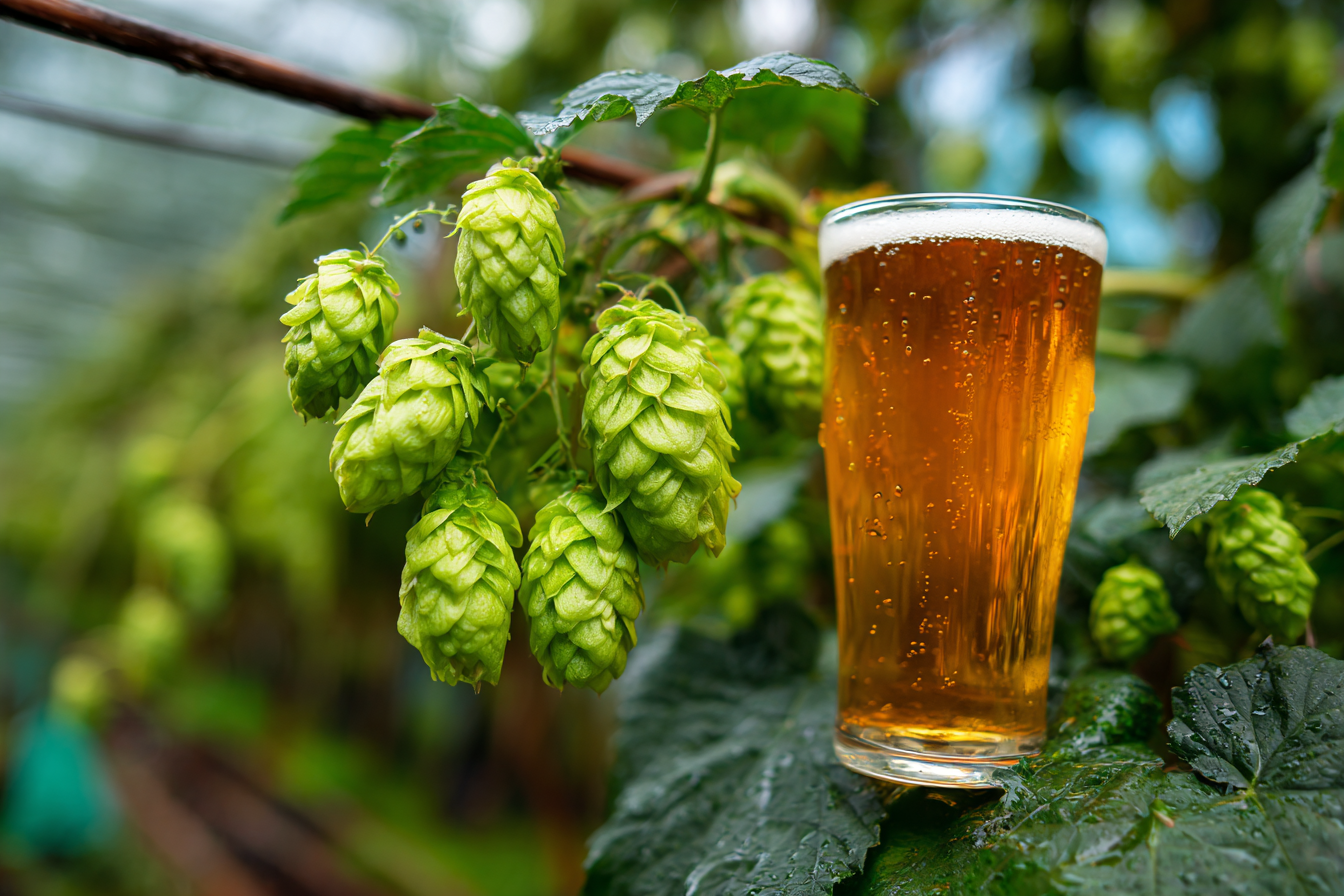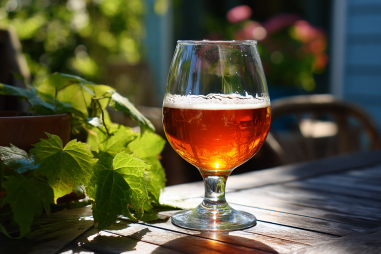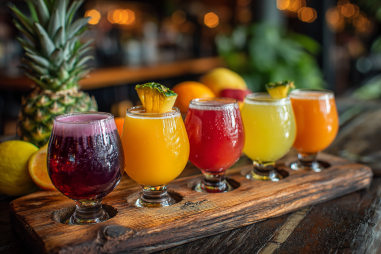American Pale Ale (APA) is a beloved style known for its balance between malt sweetness and hop-driven bitterness and aroma. At the core of this vibrant beer style lies the hops, which impart distinctive flavors and aromas that make each APA unique. In this article, we’ll dive into the hop varieties that have become synonymous with American Pale Ales and explore how their characteristics shape the beer’s profile. Whether you’re a homebrewer or a hop enthusiast, understanding these hop varieties will enhance your appreciation of APAs.
The Importance of Hops in American Pale Ale
Hops are the defining ingredient in American Pale Ale, providing not just bitterness to offset malt sweetness but also contributing a complex spectrum of aromas and flavors. Unlike some other beer styles where hops take a backseat, APAs put hops front and center. The choice of hop variety, timing of additions during brewing, and even the technique of dry hopping can dramatically influence the final character. From floral and citrus notes to pine resin and tropical fruit flavors, hops give APAs their distinctive personality and drinkability, making them a favorite among craft beer lovers.
Classic American Hop Varieties
Several hop varieties stand out for their historical and ongoing importance in the American Pale Ale style. These hops are often used singly or in combination to create the classic APA flavor profile:
- Cascade: Perhaps the most iconic American hop, Cascade is famous for its bright floral and grapefruit aroma. It imparted the first wave of uniquely American hop character to the craft beer revolution in the 1970s and remains a staple today.
- Centennial: Sometimes called a “super Cascade,” Centennial offers a stronger bittering potential with citrus notes, including lemon and grapefruit, combined with floral and piney undertones. It’s a versatile hop often used for both bitterness and aroma.
- Citra: Known for intensely fruity aromas that include citrus, tropical fruit, and melon, Citra hops are a modern favorite for APA brewers focusing on juicy, aromatic beers.
- Amarillo: This hop variety brings sweet orange and floral notes with a smooth bitterness, offering a unique balance that enhances the complexity of APAs.
- Simcoe: While sometimes more popular in IPAs, Simcoe’s pine, earth, and fruity characteristics lend depth and a resinous backbone to certain APAs.
Flavor and Aroma Characteristics of Each Hop
Each hop variety plays a distinct role in shaping the sensory experience of an APA:
- Cascade: Floral and citrus-forward, particularly grapefruit, often described as clean and crisp. It pairs well with malt sweetness and leaves a bright finish.
- Centennial: Adds sharper citrus notes, with lemon and grapefruit brightness, plus subtle pine bitterness that creates a balanced bitterness profile.
- Citra: Extremely aromatic with bursts of tropical fruit like passion fruit, mango, and lychee alongside lemon zest, contributing to juicy aromas.
- Amarillo: Offers a mellower citrus character reminiscent of sweet orange and mild floral undertones that enhance complexity without overwhelming.
- Simcoe: Brings earthy and pine resin character with hints of berry and apricot, providing a grounding element to more fruit-forward blends.
How Hop Combinations Affect Bitterness and Balance
Brewers often combine hop varieties to achieve a harmonious balance of bitterness, aroma, and flavor complexity. For example, a blend of Cascade and Centennial can create a well-rounded bitterness with layered citrus and pine notes. Adding Citra or Amarillo into the late hop additions or dry hopping phases infuses tropical and sweet citrus aromas that brighten the beer’s finish. Meanwhile, Simcoe may be used in small percentages to add depth and balance earthiness against the lighter fruit tones. These combinations enable brewers to fine-tune the beer’s bitterness level and aromatic intensity, resulting in an approachable yet complex APA.
Seasonal and Experimental Hop Varieties Gaining Popularity
Beyond the classic hops, brewers are experimenting with newer and less traditional hop varieties to push APA flavor boundaries. Some rising stars include:
- Azacca: Known for its tropical fruit aromas with mango, pineapple, and citrus, adding vibrant character to summer-themed APAs.
- Mosaic: Offers complex resinous pine, tropical fruit, and berry notes, suitable for IPAs and hoppier APAs.
- El Dorado: Affords a unique mix of tropical fruit, stone fruit, and candy-like sweetness, differentiating APAs on crowded tap lists.
- Bru-1: Brings apricot, pineapple, and papaya flavors with a mild bitterness, great for fresh, juicy APA variants.
These experimental hops provide new dimensions that, combined with classic varieties, allow brewers to innovate while maintaining APA’s recognizable essence.
Tips for Brewers Choosing Hops for APA
When selecting hops for an APA, consider the following key factors:
- Desired Flavor Profile: Are you aiming for bright citrus, piney resin, tropical fruit, or a balanced blend? Choose hops that reflect your target aromas.
- Intensity of Bitterness: Some hops provide stronger bitterness while others are more aromatic. Adjust your additions accordingly.
- Combination Potential: Experiment with hop blends to add layers and complexity instead of relying on a single variety.
- Hop Timing: Bittering hops added early in the boil will impart less aroma but more bitterness, while late additions or dry hopping elevate aroma and flavor.
- Freshness and Quality: Use fresh, well-stored hops for maximum aroma impact.
- Batch Size and Cost: Some hop varieties can be pricier; balance your recipe to stay within budget if brewing commercially or at home.
Effects of Dry Hopping and Late Hop Additions
Dry hopping and late hop additions are key techniques in APA brewing that unlock hop aromatics without increasing bitterness excessively. Adding hops in the whirlpool or near the end of the boil preserves volatile oils, enhancing fruity, citrusy, floral, or piney notes. Dry hopping, which involves adding hops directly to the fermented beer, intensifies aroma dramatically and can add a fresh hop character that’s otherwise difficult to achieve. Many APAs benefit from a combination of these methods to create a layered sensory experience that’s aromatic but still well balanced with malt and bitterness.
What Makes Hops the Identity of American Pale Ale?
At the heart of every great American Pale Ale is the hop character that distinguishes it from other beer styles. The vibrant hop aromas, balanced bitterness, and flavor complexity define APA’s approachable yet exciting profile. Whether it’s the classic grapefruit and floral notes of Cascade, the citrus power of Centennial, the tropical fruit punch of Citra, or innovative experimental varieties, hops give APAs their soul. The flexibility in hop choice and combination allows brewers to showcase creativity while maintaining the style’s signature balance. This dynamic hop presence is what keeps American Pale Ale fresh, beloved, and continuously evolving in the craft beer world.







